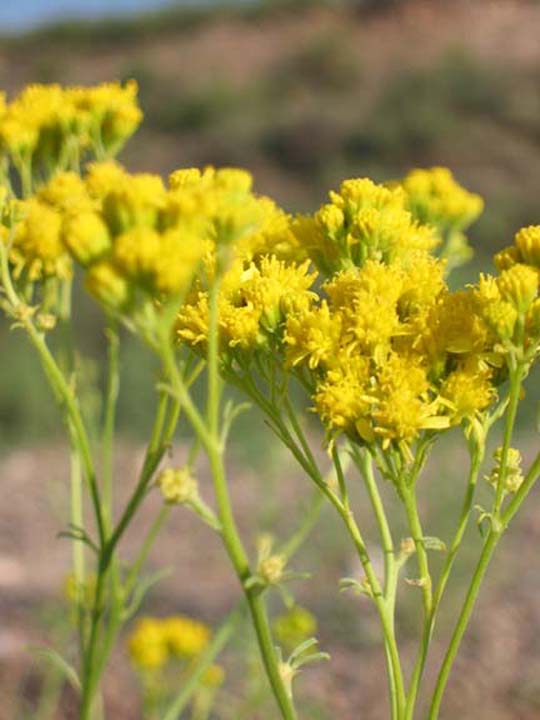Annuals, 30-70 cm. Phyllaries 8(-12), mostly linear to narrowly oblanceolate. Rays 3-8. Disc florets 15-30; corollas creamy to bright yellow, mostly 5-7 mm, lobe lengths 0.3-1 times throats; anthers yellowish. Cypselae 3-5 mm; pappus scales 1.5-6 mm. 2n = 24, 48.
Flowering summer-fall. Open slopes and washes, sandy or gravelly soils; 600-1500 m; Ariz., N.Mex.; Mexico (Chihuahua, Sonora).
Duration: Annual
Nativity: Native
Lifeform: Forb/Herb
General: Annual with erect stems 30-70 cm tall, much branched, slender stems, striate, with puberulent herbage.
Leaves: Biternate or triternately parted, to 12 cm long, the divisions linear to filiform.
Flowers: Numerous radiate heads on peduncles 1 cm or less; turbinate involucre, 4-5 mm high, 8 phyllaries mostly linear to narrowly oblanceolate, puberulent and scarious tipped; 3-8 yellow rays, each 3-4 mm long, shallowly 3-toothed; disc florets yellow to creamy, mostly 5-7 mm long, lobe lengths 0.3-1 times the throats, tube glandular-granuliferous.
Fruits: Cypselae 3-5 mm, black, sparsely pubescent, truncate at summit and tapering to the base.
Ecology: Found in sandy soils, often on open slopes or along washes from 2,000-5,000 ft (610-1524 m); flowers July-October.
Distribution: AZ, NM, s TX; south to n MEX.
Notes: An erect annual mostly branched near the top; with thinly divided leaves, distinguished from Hymenothrix wrightii by its yellow disc florets.
Ethnobotany: Unknown
Etymology: Hymenothrix comes from Greek hymen, meaning membrane and thrix, bristle, while wislizeni is named for Frederick Adolf Wislizenus (1810-1889) a botanist who traveled throughout the southwest.
Synonyms: None
Editor: SBuckley 2010, FSCoburn 2015












